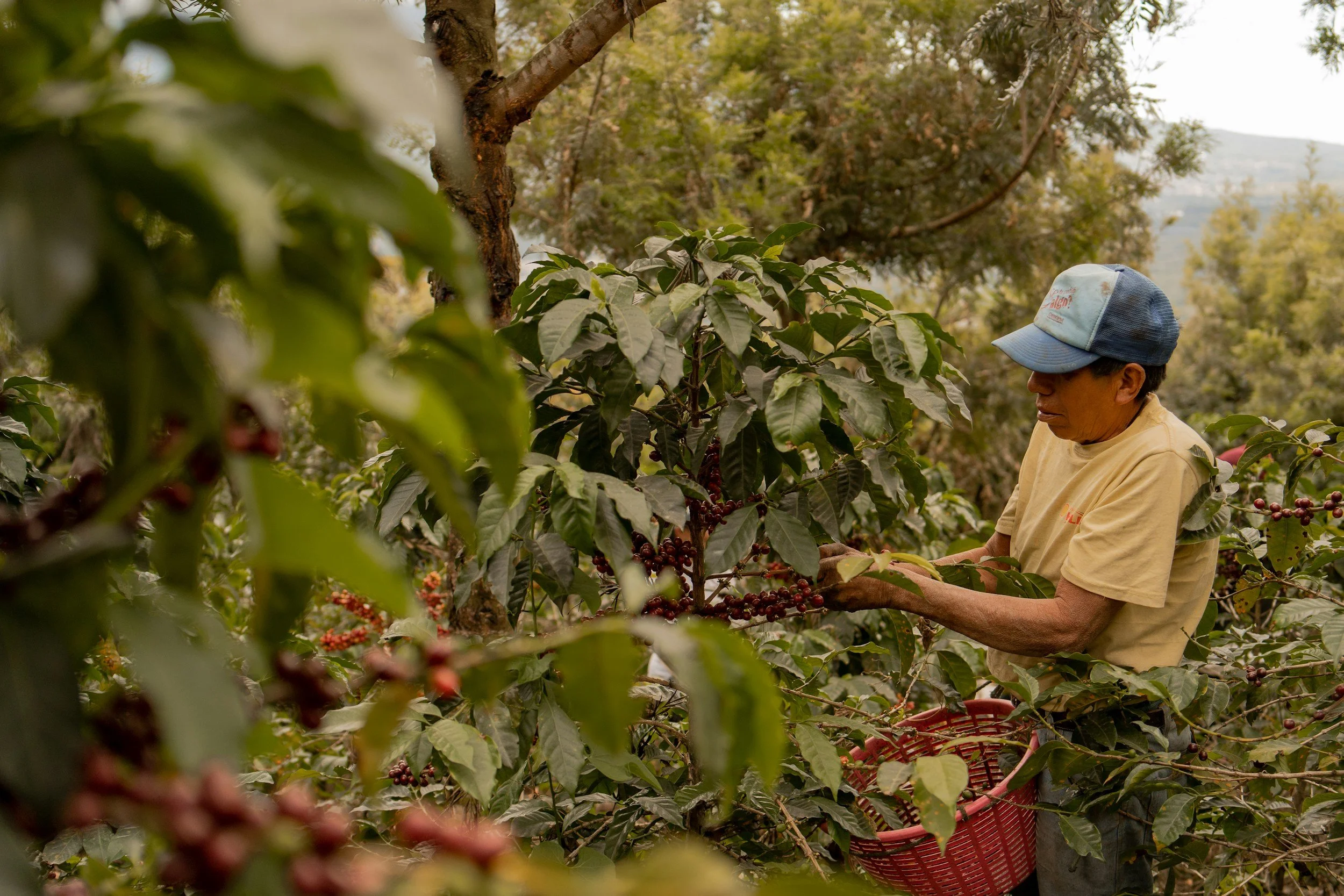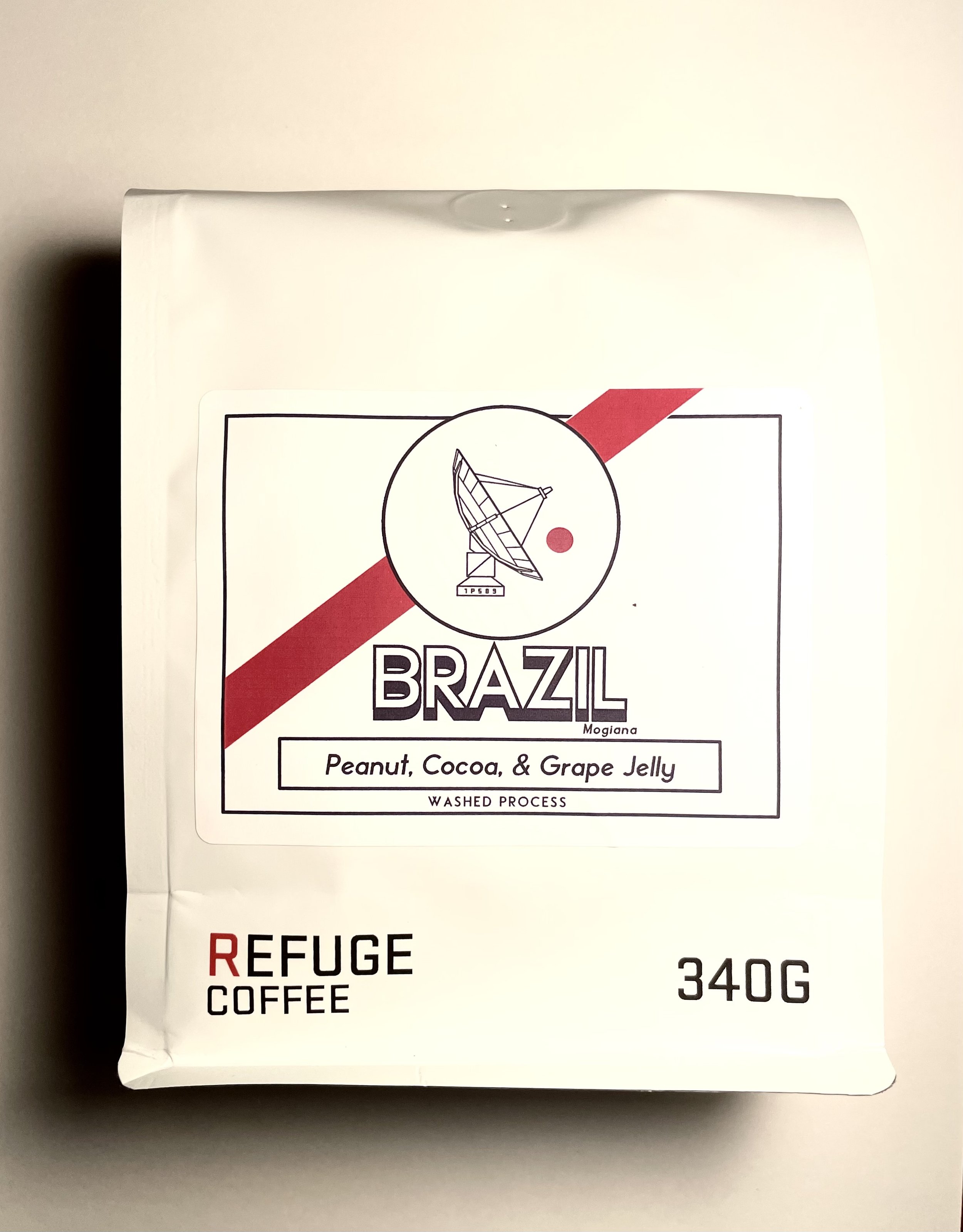What is a Coffee Farm?
What is a Coffee Farm and What is Life Like on One?
Coffee is more than just a drink, it’s a journey that starts on farms across the globe. Long before coffee makes it to our mugs, farmers are growing and harvesting coffee cherries to process, dry, and export across the world.
In this article we will cover where coffee is grown, how farms operate, and why it matters.
Where Coffee Grows
Big Sur Blend - Blend of Brazil / Colombia - Starting at $19.00
Much like rice or grapes, there is a sweet spot where coffee farms truly thrive. The “Coffee Belt”, which is located between the Tropics of Cancer and Capricorn, includes many of the major coffee producing countries like Ethiopia, Colombia, and Brazil (which we often sport on our shelves).
Central/ South America, Africa and Asia provide nutrient rich soil and perfect altitudes for coffee beans to fully develop and offer up delicious flavors.
Altitude or elevation plays a big part on the “notes” you often hear about in coffee shops and on coffee bags. Higher altitudes slow down the growth of coffee plants which causes the flavors to develop slower and mature to the fullest.
At higher altitudes the beans tend to be more floral and fruity with complex flavors. As you go to lower altitudes you begin to lose the complexity of flavor profiles, but can achieve smooth and sweet notes.
Life on a Coffee Farm
Coffee farms are often generational family businesses, poured into with sweat and pride. Families gather before dawn and begin harvesting ripe cherries. They throw these cherries into woven baskets and take them to be processed.
Plant health is extremely important for farmers. Farmers routinely inspect each plant and the cherries being produced to make sure they are all staying healthy. Damaged crops or faulty beans can lose a lot of money. With a constantly changing climate, farms now face even more hardships than ever before.
As younger demographics have migrated towards urban centers for better paying jobs, coffee farms have dealt with labor shortages and increased delays in exportation. Both of which cause financial strain on these cost-intensive businesses.
Most smaller farms utilize the strong hands of the surrounding towns.
The Harvesting & Processing Stages
Bigger farms often use machines to collect cherries as opposed to hand picking. While faster, using machines means typically picking cherries that aren’t quite ripe and once they go through the sorting process they get tossed. Smaller farms can’t afford to lose profit so it's best for them to hand pick cherries.
There are many ways for farmers to process beans, but the main three are the natural process, washed process, and honey process.
For the natural process, workers manually remove the outer layers of the bean after drying. This method poses the risk of impurities being dried to the bean and infusing an unpleasant flavor.
The washed method removes the outer layers by using a machine called a depulper, this is often more expensive due to the amount of water required but is faster and less faulty.
The honey method is similar to the washed method but only removes a specific percentage of the inner mucilage to give it a unique flavor. This method uses less water, but poses a higher risk of fermentation.
Why Coffee Farms Matter
Brazil Mogiana Single Origin - Notes of Peanut, Cocoa, and Grape Jelly - Starting at $19.00
Coffee farming is great for the economics of neighboring communities. Farms create jobs for those in need of stable well paying jobs, they create better infrastructure and bring more money to the surrounding towns.
There are pros and cons of the newer trend of specialty coffee. The effort into ensuring quality beans can be time consuming and produces less yield, but if bought ethically, farmers can profit more.
We source our beans from a fair trade third-party company that ensures laborers are being paid for their work. When we buy our beans we are paying four times as much as many large scale coffee companies.
Although this means our bags are priced a bit higher, it allows us to pay farmers a livable wage and invest in crop care, ensuring exceptional quality for years to come.
Visiting Coffee Farms
Coffee tourism has become a new destination for vacations. From coffee cupping and learning brew methods to harvesting beans and attempting to roast, farm owners set up many different ways for tourists to get involved. This drives people’s understanding of coffee and creates new found appreciation.
Lots of high coffee producing countries are frequent stops for coffee enthusiasts. Colombia, Costa Rica, Ethiopia, and even Hawaii, which has a lower altitude but rich volcanic soil that gives it a unique flavor profile, are high traffic areas and frequently visited.
Conclusion
Every cup of coffee is proof that someone in the world puts enough pride in what they do to guarantee that you will enjoy every sip. Beans connect our culture to other countries in tiny ways.
Next time you’re at your favorite coffee shop, take a moment before you sip to appreciate the journey behind your coffee and consider visiting a farm or choosing ethically sourced beans.




